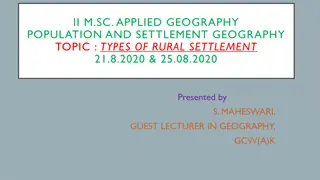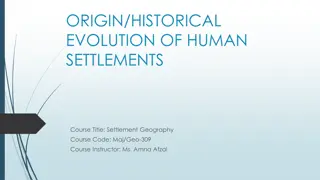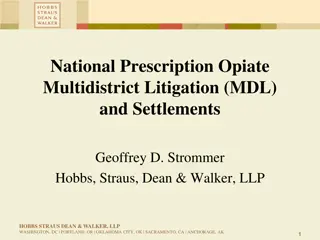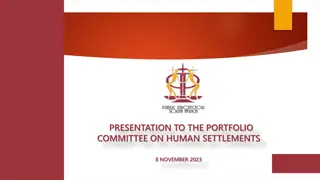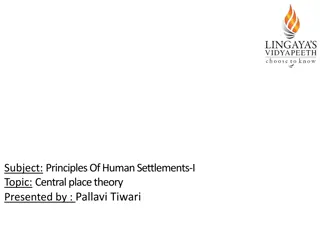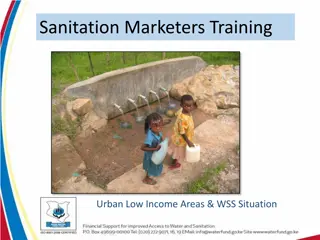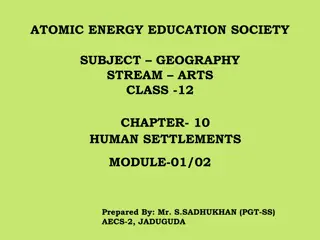Understanding Urban Settlements in Geography
Urban settlements refer to densely populated areas with man-made surroundings and high industrialization, providing employment opportunities and various amenities. These areas include cities, towns, and suburbs, offering advantages like easy access to facilities but facing challenges such as pollution. Settlement hierarchy patterns and definitions of towns and cities help define urban centers. Geographers describe towns and cities as concentrations of people engaged in commerce, industry, and other activities within organized structures.
Download Presentation

Please find below an Image/Link to download the presentation.
The content on the website is provided AS IS for your information and personal use only. It may not be sold, licensed, or shared on other websites without obtaining consent from the author. Download presentation by click this link. If you encounter any issues during the download, it is possible that the publisher has removed the file from their server.
E N D
Presentation Transcript
II M.Sc. APPLIED GEOGRAPHY GOVERNMENT COLLEGE FOR WOMEN (A) KUMBAKONAM POPULATION AND SETTLEMENT GEOGRAPHY TITLE : URBAN SETTLEMENTS TITLE : URBAN SETTLEMENTS 11 11.09.2020 .09.2020 PRESENTED BY S. MAHESWARI GUEST LECTURER IN GEOGRAPHY
URBAN SETTLEMENTS URBAN SETTLEMENTS
The term urban simply refers to the region or area which is densely populated and possess the characteristics of the man- made surroundings. The people residing in such area, are engaged in trade, commerce or services. In this settlement, there is high scale industrialisation that results in better employment opportunities. The Urban settlement is not confined to the cities only, but towns and suburbs (suburban areas) are also included in it. There are many advantages of life in urban areas like easy access to various amenities, better transportation facilities, entertainment and education options, health facilities. Although it suffers certain drawbacks like pollution, caused due to large scale industrialisation and means of transportation like buses, trains, cars and so on, leading to increasing in health problems in the people living in that area.
SETTLEMENT HIERARCHY PATTERN SETTLEMENT HIERARCHY PATTERN An Urban settlement is a concentrated settlement that constitutes or is part of an urban area. It is an area with high density of human-created structures. These geometrical patterns are squares and rectangles and are well laid out. usually in
DEFINITION OF A TOWN DEFINITION OF A TOWN The term urban centre includes both town and city. Im general use town and city are taken as synonymous, but in the specific sense, a small urban centre is known as town while big urban centre is called city . Here the term town is used for all the urban centres : town, city, metropolitan etc. A town and city is variously defined by the geographers. Some significant definitions of town and city are noted below: 1. A city is contiguous and dense aggrlomeration of people and dwellings occupying a large area of ground and lying at the focus of great trade routes F.RATZEL
A town consists of an organized group in which normally the main occupations are concerned with commerce and industy as opposednto agricultural pursuits FERDINAND VON RICHTHOFEN. A city is a social organization of much greater scope ; it is the expression of a stage of civilization which certain localities have not achieved and which they may perhaps never of themselves attain P.VIDAL DE LA BLACHE. A town can be said to exist if the majority of population spend the greater part of its time within the bounds of the agglomeration JEAN BRUNHES. A town is a place where transport, manufacture, the import and export of raw materials, education, the administration of national affairs are carried on, or quite simply a place of residence M.AUROUSSEAU. A city is a nucleus of people living in compact groups within the minimum population of 2000 providing that agricultural population does not exceed 25% in the agglomerations below 10000 and above 10000 all the centres are urban irrespective of the contribution of population EUROPEAN STATISTICAL CONFERENCE (1949)
Criteria of Definition of a Town Criteria of Definition of a Town There are many criteria used in censuses and other definitions of urban places including size, density, and occupation of population and administrative authority. Following are the main criteria used for the the definition of a town: 1. Minimum Population 2. Urban Occupations 3. Status of Administration 4. Density of Population 5. Government s Decision 6. Way of Life 7. Combined Criteria
URBAN AREA URBAN AREA The concept of an "urban area" as used in economic statistics should not be confused with the concept of the "urban area" used in road safety statistics. The last concept is also known as "built-up area in road safety". According to the definition by the Office for National Statistics, "Built-up areas are defined as land which is 'irreversibly urban in character', meaning that they are characteristic of a town or city. They include areas of built-up land with a minimum of 20 hectares (200,000 m2; 49 acres). Any areas [separated by] less than 200 metres [of non-urban space] are linked to become a single built-up area.
Definition of Urban Area in the Census of India Definition of Urban Area in the Census of India The definition of a town or urban area has been the same since 1961 to 2011. In the census of India 2011, the definition of urban area adopted is as follows: All statutory places with a municipality, corporation, cantonment board or notified town area committee, etc. A place satisfying the following three criteria simultaneously : 1. A minimum population of 5000 2. At least 75 % of male working population engaged in non- agricultural pursuits, and 3. A density of population at least 400 per sq.km. (1000 per sq.mile).
City and Urban Agglomeration : Towns with population of 100000 and above are called cities. An Urban Agglomeration is a continuous urban spread constituting a town and its adjoining urban outgrowths or two or more physically continuous towns together and any adjoining urban outgrowths of such towns. For the purpose of delineation of Urban Agglomerations during Census of India 2011, following criteria are taken as pre-requisites: 1. The core town or at least one of the constituent towns of an urban agglomeration should necessarily be a statutory town, 2. The total population of all the constituents of an urban agglomeration should not be less than 20000.
With these two basic criteria having been met, the following are the possible different situations in which Urban Agglomerations would be constituted: 1. A city or town with one or more contiguous outgrowths, 2. Two or more adjoining outgrowths, and 3. A city and one or more adjoining towns with their outgrowths all of which form a continuous spread. towns with their
Differences Between Urban and Rural The fundamental differences between urban and rural are discussed in the following points: A settlement where the population is very high and has the features of a built environment (an environment that provides basic facilities for human activity), is known as urban. Rural is the geographical region located in the outer parts of the cities or towns. The life in urban areas is fast and complicated, whereas rural life is simple and relaxed.
The Urban settlement includes cities and towns. On the other hand, the rural settlement includes villages and hamlets. There is greater isolation from nature in urban areas, due to the existence of the built environment. Conversely, rural areas are in direct contact with nature, as natural elements influence them. Urban people are engaged in non-agricultural work, i.e. trade, commerce or service industry. In contrast, the primary occupation of rural people is agriculture and animal husbandry. Population wise, urban areas are densely populated, which is based on the urbanisation, i.e. the higher the urbanisation, the higher is the population. On the contrary, the rural population is sparse, which has an inverse relationship with agriculturism.
Urban areas are developed in a planned and systematic way, according to the process of urbanisation and industrialisation. Development in rural areas is seldom, based on the availability of natural vegetation and fauna in the region. When it comes to social mobilisation, urban people are highly intensive as they change their frequently in search of better opportunities. However, in rural areas occupational or territorial mobility of the people is relatively less intensive. Division of labour and specialisation is always present in the urban settlement at the time of job allotment. As opposed to rural areas, there is no division of labour. occupation or residence
THANK YOU THANK YOU









